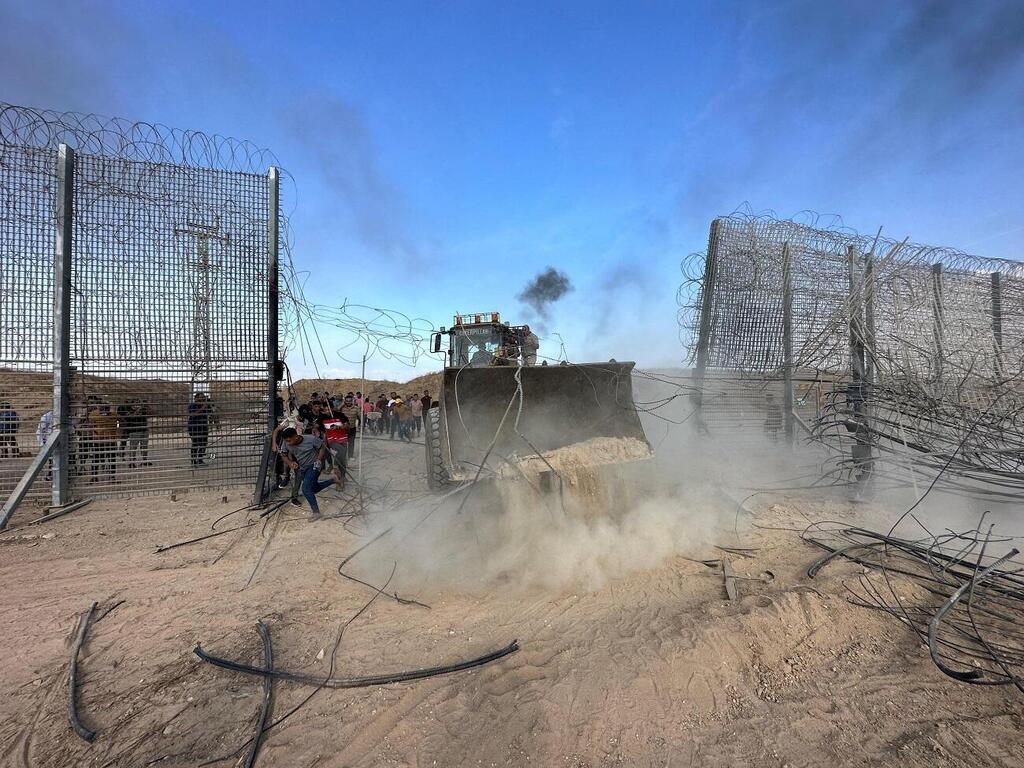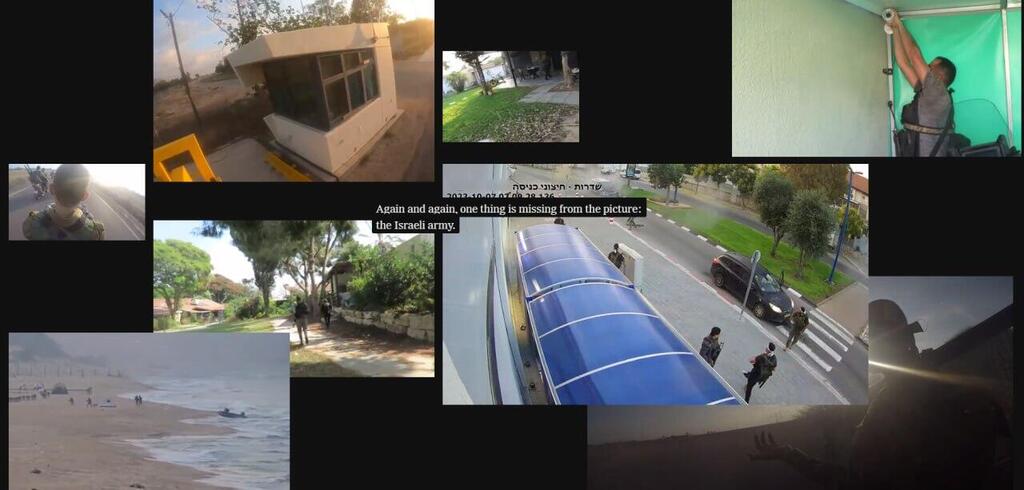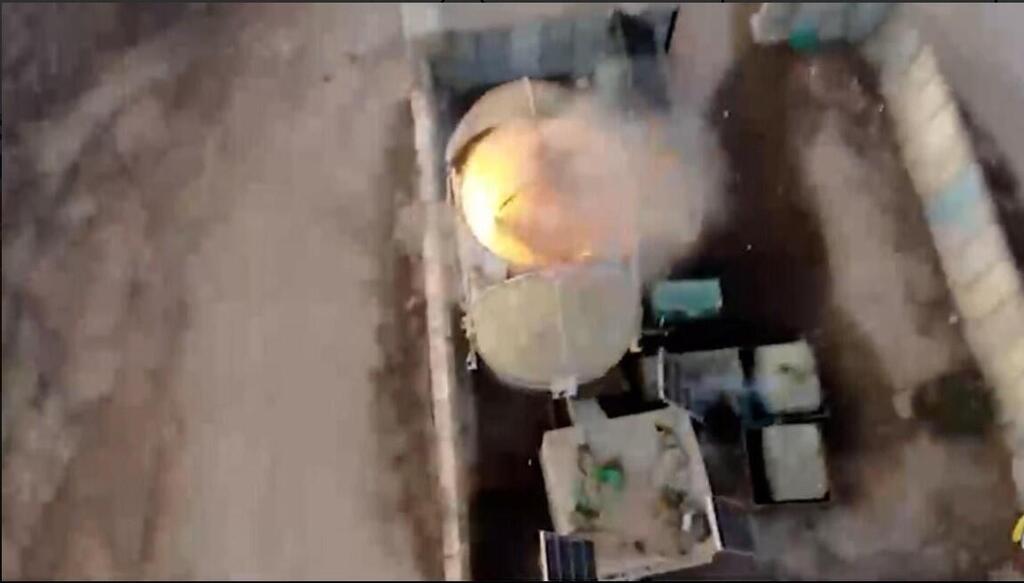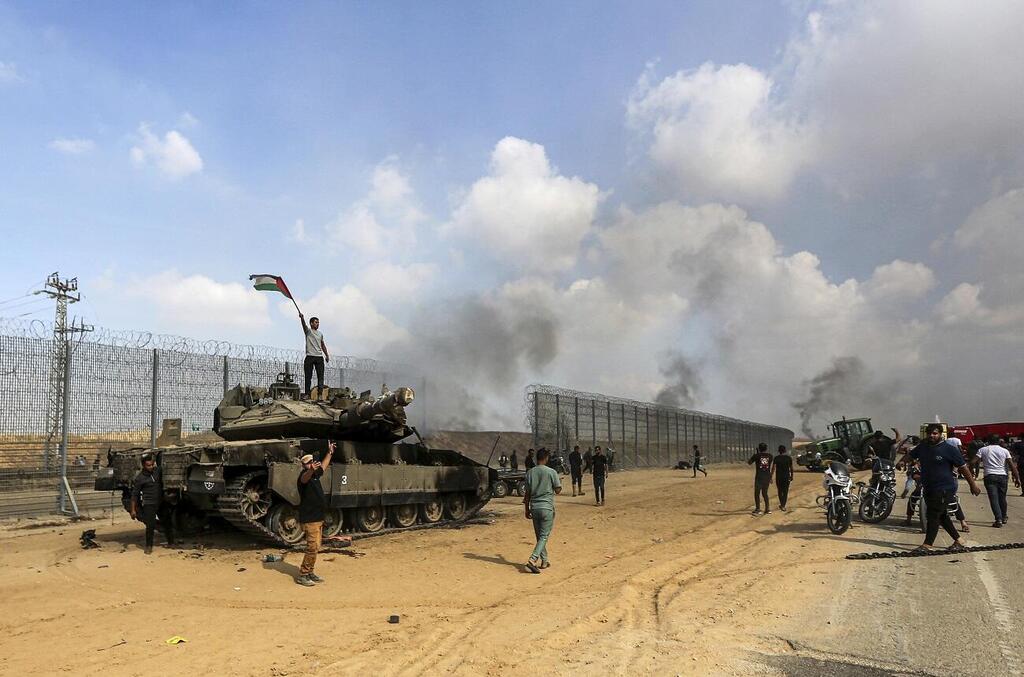Hamas terrorists raid Gaza Division's Re'im base on October 7
A New York Times report published on Saturday reveals new accounts from the October 7 attack, highlighting the shockingly unprepared state of the IDF.
Read more:
The report indicates that on the day of the attack, the IDF suffered from a shortage of weapons and was so poorly organized that soldiers had to use makeshift WhatsApp groups and rely on social media posts to gather information that would serve them in the fighting they unexpectedly found themselves in.
4 View gallery


Gazans break through Israel border fence using heavy machinery on October 7
(Photo: Reuters)
Commanders rushed into battle prepared only for short-term engagement. Helicopter pilots were instructed to keep up with news reports and Telegram channels to select targets.
It was from a brigade commander responsible for IDF operations along the border with Gaza. He reported that his base was under attack. A military source said that the commander was unable to describe the extent of the attack or provide additional details but requested all possible reinforcements.
On the morning of October 7, deep within the bunker underneath the IDF headquarters in Tel Aviv, known as “the Pit”, commanders were still trying to finalize and understand reports of Hamas' rocket fire toward southern Israel when the call came in.
At 7:43 a.m., more than an hour after the rocket attack began and thousands of Hamas terrorists stormed into Israel, the team in the Pit issued its first orders of the day regarding the deployment of forces. They directed all emergency forces and any units that could to immediately move south. The invasion of Israel was already in full swing, and the military leaders had not yet fully grasped it.
Perhaps the most alarming issue, according to past and present soldiers and officers, was that the IDF had no plan in place for a wide-scale Hamas invasion of Israeli territory.
The IDF believed that at most, Hamas could launch a cell or a very small number of cells into Israel and prepared and trained accordingly for such a scenario, not for a massive invasion. If any such contingency plan did exist, the soldiers say, no one had trained for it, and no one implemented it. The soldiers who were active on that day simply improvised as the situation unfolded.
Former Southern Command head Major General Yom Tov Samia told the Times that on October 7 there was no proper defensive preparation, no training, no equipment and no force buildup for such an operation.
The Times' report is based on internal documents of the Israeli government and an examination of materials from a military archive including tens of thousands of videos.
The accounts collected by The Times paint a picture of the confusion on that day. Reserve soldiers were unprepared for rapid mobilization and deployment, with some describing how they headed south on their own initiative.
A source in the Southern Command admitted that even by the afternoon, officers there did not grasp the situation. They estimated that about 200 Hamas terrorists had infiltrated Israel, when in reality, the number was ten times higher. Most of the day was spent for the military to regain control over the Re’im military base, the Gaza Division headquarters.
Brigadier General Hisham Ibrahim told the newspaper that when your brigade is under fire, the focus shifts to clearing it of terrorists, which distracts from managing the broader battle. He defended the IDF's response to the attack, suggesting that very few modern armies could have retaken the area as quickly as Israel did.
One of the chaotic scenes that morning was at the Sha'ar Hanegev junction. Hamas took over the junction, murdered motorists, set their cars on fire and blocked the roads.
A reservist serving in a counter-terrorism unit recounted to the newspaper that every encounter at that junction led to the killing of terrorists and slowed their advance. The further they progressed, the more they realized they were behind. The kibbutzim needed them, and people were being murdered.
In the absence of communication with the Re’im base, and as military leaders in Tel Aviv struggled to grasp the scope of the attack, the Maglan unit turned to an unexpected source of information: Rafael Hayun, a 40-year-old resident of Netivot living with his parents.
Hayun was watching videos Hamas documented of the attack in real-time on social media and passed the information to Maglan officers. He began relaying WhatsApp messages from people trying to save their children, their friends and themselves.
In other cases, soldiers sought help from the public to gather information. A commander of one unit instructed his helicopter-borne soldiers to search for information on Telegram channels and in news reports to select targets.
A senior commander, a reservist who fought that day, noted that there were many heroes on October 7, but added that when an army needs heroes, it usually means things have gone wrong.
Soldiers too are among those questioning what went wrong that day. Reservist soldier Davidi Ben Zion told The New York Times that his paratrooper unit left its central base in a convoy around 1:30pm. He and his friends mobilized themselves without an official call-up, and to save time, they departed without night-vision equipment or suitable body armor.
He expected to see the roads filled with soldiers, equipment and armored vehicles moving south. He recalled in the interview, "The roads were empty!" Almost seven hours after the terrorist attack began, he turned to a fellow reservist and asked, "Where is the IDF?"







